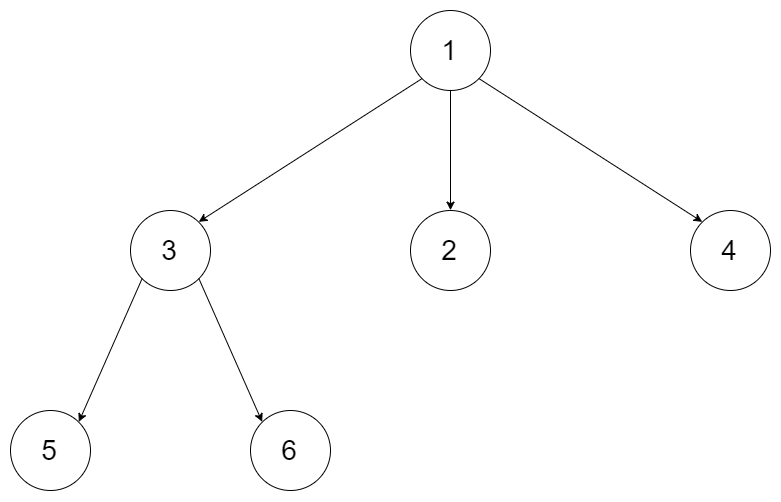尽管之前你可能做过这道题目,但只要认真看完,相信你会收获满满!可以一起解决如下两道题目:
- 104.二叉树的最大深度
- 559.n叉树的最大深度
104.二叉树的最大深度
题目地址:https://leetcode-cn.com/problems/maximum-depth-of-binary-tree/
给定一个二叉树,找出其最大深度。
二叉树的深度为根节点到最远叶子节点的最长路径上的节点数。
说明: 叶子节点是指没有子节点的节点。
示例:给定二叉树 [3,9,20,null,null,15,7],

返回它的最大深度 3 。
递归法
本题可以使用前序(中左右),也可以使用后序遍历(左右中),使用前序求的就是深度,使用后序求的是高度。
而根节点的高度就是二叉树的最大深度,所以本题中我们通过后序求的根节点高度来求的二叉树最大深度。
这一点其实是很多同学没有想清楚的,很多题解同样没有讲清楚。
我先用后序遍历(左右中)来计算树的高度。
- 确定递归函数的参数和返回值:参数就是传入树的根节点,返回就返回这棵树的深度,所以返回值为int类型。
代码如下:
intgetdepth(treenode*node)
- 确定终止条件:如果为空节点的话,就返回0,表示高度为0。
代码如下:
if(node==null)return0;
- 确定单层递归的逻辑:先求它的左子树的深度,再求的右子树的深度,最后取左右深度最大的数值 再+1 (加1是因为算上当前中间节点)就是目前节点为根节点的树的深度。
代码如下:
intleftdepth=getdepth(node->left);//左
intrightdepth=getdepth(node->right);//右
intdepth=1+max(leftdepth,rightdepth);//中
returndepth;
所以整体c++代码如下:
classsolution{
public:
intgetdepth(treenode*node){
if(node==null)return0;
intleftdepth=getdepth(node->left);//左
intrightdepth=getdepth(node->right);//右
intdepth=1+max(leftdepth,rightdepth);//中
returndepth;
}
intmaxdepth(treenode*root){
returngetdepth(root);
}
};
代码精简之后c++代码如下:
classsolution{
public:
intmaxdepth(treenode*root){
if(root==null)return0;
return1+max(maxdepth(root->left),maxdepth(root->right));
}
};
精简之后的代码根本看不出是哪种遍历方式,也看不出递归三部曲的步骤,所以如果对二叉树的操作还不熟练,尽量不要直接照着精简代码来学。
本题当然也可以使用前序,代码如下:(充分表现出求深度回溯的过程)
classsolution{
public:
intresult;
voidgetdepth(treenode*node,intdepth){
result=depth>result?depth:result;//中
if(node->left==null&&node->right==null)return;
if(node->left){//左
depth++;//深度+1
getdepth(node->left,depth);
depth--;//回溯,深度-1
}
if(node->right){//右
depth++;//深度+1
getdepth(node->right,depth);
depth--;//回溯,深度-1
}
return;
}
intmaxdepth(treenode*root){
result=0;
if(root==0)returnresult;
getdepth(root,1);
returnresult;
}
};
可以看出使用了前序(中左右)的遍历顺序,这才是真正求深度的逻辑!
注意以上代码是为了把细节体现出来,简化一下代码如下:
classsolution{
public:
intresult;
voidgetdepth(treenode*node,intdepth){
result=depth>result?depth:result;//中
if(node->left==null&&node->right==null)return;
if(node->left){//左
getdepth(node->left,depth+1);
}
if(node->right){//右
getdepth(node->right,depth+1);
}
return;
}
intmaxdepth(treenode*root){
result=0;
if(root==0)returnresult;
getdepth(root,1);
returnresult;
}
};
迭代法
使用迭代法的话,使用层序遍历是最为合适的,因为最大的深度就是二叉树的层数,和层序遍历的方式极其吻合。
在二叉树中,一层一层的来遍历二叉树,记录一下遍历的层数就是二叉树的深度,如图所示:

所以这道题的迭代法就是一道模板题,可以使用二叉树层序遍历的模板来解决的。
如果对层序遍历还不清楚的话,可以看这篇:二叉树:层序遍历登场!
c++代码如下:
classsolution{
public:
intmaxdepth(treenode*root){
if(root==null)return0;
intdepth=0;
queueque;
que.push(root);
while(!que.empty()){
intsize=que.size();
depth++;//记录深度
for(inti=0;i< size; i++) {
treenode* node = que.front();
que.pop();
if(node->left)que.push(node->left);
if(node->right)que.push(node->right);
}
}
returndepth;
}
};
那么我们可以顺便解决一下n叉树的最大深度问题
559.n叉树的最大深度
题目地址:https://leetcode-cn.com/problems/maximum-depth-of-n-ary-tree/
给定一个 n 叉树,找到其最大深度。
最大深度是指从根节点到最远叶子节点的最长路径上的节点总数。
例如,给定一个 3叉树 :

我们应返回其最大深度,3。
思路:
依然可以提供递归法和迭代法,来解决这个问题,思路是和二叉树思路一样的,直接给出代码如下:
递归法
c++代码:
classsolution{
public:
intmaxdepth(node*root){
if(root==0)return0;
intdepth=0;
for(inti=0;i< root->children.size();i++){
depth=max(depth,maxdepth(root->children[i]));
}
returndepth+1;
}
};
迭代法
依然是层序遍历,代码如下:
classsolution{
public:
intmaxdepth(node*root){
queueque;
if(root!=null)que.push(root);
intdepth=0;
while(!que.empty()){
intsize=que.size();
depth++;//记录深度
for(inti=0;i< size; i++) {
node* node = que.front();
que.pop();
for(intj=0;j< node->children.size();j++){
if(node->children[j])que.push(node->children[j]);
}
}
}
returndepth;
}
};
其他语言版本
java
104.二叉树的最大深度
classsolution{
/**
*递归法
*/
publicintmaxdepth(treenoderoot){
if(root==null){
return0;
}
intleftdepth=maxdepth(root.left);
intrightdepth=maxdepth(root.right);
returnmath.max(leftdepth,rightdepth)+1;
}
}
classsolution{
/**
*迭代法,使用层序遍历
*/
publicintmaxdepth(treenoderoot){
if(root==null){
return0;
}
dequedeque=newlinkedlist<>();
deque.offer(root);
intdepth=0;
while(!deque.isempty()){
intsize=deque.size();
depth++;
for(inti=0;i< size; i++) {
treenode poll = deque.poll();
if(poll.left!=null){
deque.offer(poll.left);
}
if(poll.right!=null){
deque.offer(poll.right);
}
}
}
returndepth;
}
}
python
104.二叉树的最大深度
递归法:
classsolution:
defmaxdepth(self,root:treenode)->int:
returnself.getdepth(root)
defgetdepth(self,node):
ifnotnode:
return0
leftdepth=self.getdepth(node.left)#左
rightdepth=self.getdepth(node.right)#右
depth=1+max(leftdepth,rightdepth)#中
returndepth
递归法:精简代码
classsolution:
defmaxdepth(self,root:treenode)->int:
ifnotroot:
return0
return1+max(self.maxdepth(root.left),self.maxdepth(root.right))
迭代法:
importcollections
classsolution:
defmaxdepth(self,root:treenode)->int:
ifnotroot:
return0
depth=0#记录深度
queue=collections.deque()
queue.append(root)
whilequeue:
size=len(queue)
depth+=1
foriinrange(size):
node=queue.popleft()
ifnode.left:
queue.append(node.left)
ifnode.right:
queue.append(node.right)
returndepth
559.n叉树的最大深度
递归法:
classsolution:
defmaxdepth(self,root:'node')->int:
ifnotroot:
return0
depth=0
foriinrange(len(root.children)):
depth=max(depth,self.maxdepth(root.children[i]))
returndepth+1
迭代法:
importcollections
classsolution:
defmaxdepth(self,root:'node')->int:
queue=collections.deque()
ifroot:
queue.append(root)
depth=0#记录深度
whilequeue:
size=len(queue)
depth+=1
foriinrange(size):
node=queue.popleft()
forjinrange(len(node.children)):
ifnode.children[j]:
queue.append(node.children[j])
returndepth
使用栈来模拟后序遍历依然可以
classsolution:
defmaxdepth(self,root:'node')->int:
st=[]
ifroot:
st.append(root)
depth=0
result=0
whilest:
node=st.pop()
ifnode!=none:
st.append(node)#中
st.append(none)
depth+=1
foriinrange(len(node.children)):#处理孩子
ifnode.children[i]:
st.append(node.children[i])
else:
node=st.pop()
depth-=1
result=max(result,depth)
returnresult
审核编辑 :李倩
-
C++
+关注
关注
22文章
2122浏览量
76718 -
代码
+关注
关注
30文章
4942浏览量
73160 -
二叉树
+关注
关注
0文章
74浏览量
12862
原文标题:看看这些树的最大深度!
文章出处:【微信号:TheAlgorithm,微信公众号:算法与数据结构】欢迎添加关注!文章转载请注明出处。
发布评论请先 登录
年薪100万以上模拟芯片专家的技能树

通过优化代码来提高MCU运行效率
蜂鸟E203内核中断管理模块sirv_plic_man代码分析
宇树科技,被起诉

亿纬锂能荣获杭叉集团2022-2024年度优秀供应商奖
存储示波器的存储深度对信号分析有什么影响?
白话理解RCC时钟树(可下载)
机器人看点:宇树科技王兴兴回上海母校 加速商业化落地 宇树机器人二手租赁火爆
宇树科技在物联网方面
嵌入式学习-飞凌嵌入式ElfBoard ELF 1板卡-初识设备树之设备树组成和结构
3D深度感测的原理和使用二极管激光来实现深度感测的优势






 二叉树的最大深度
二叉树的最大深度












评论